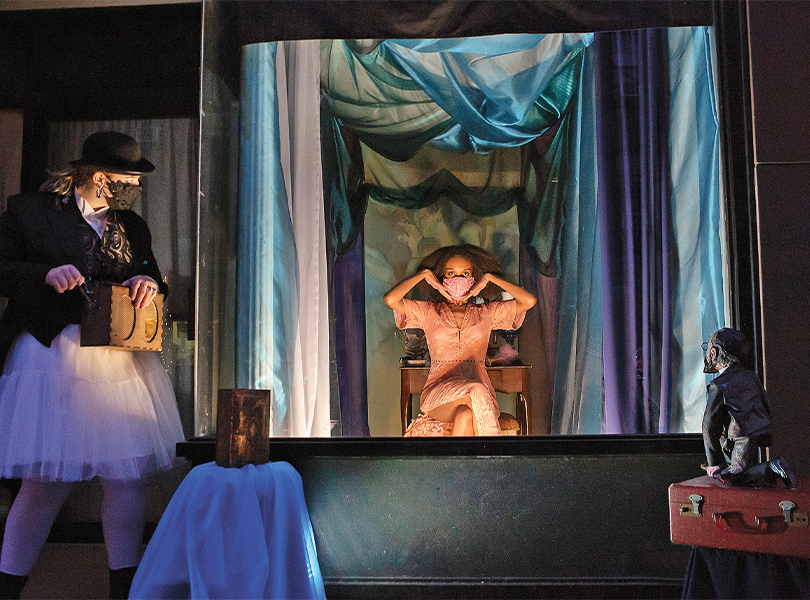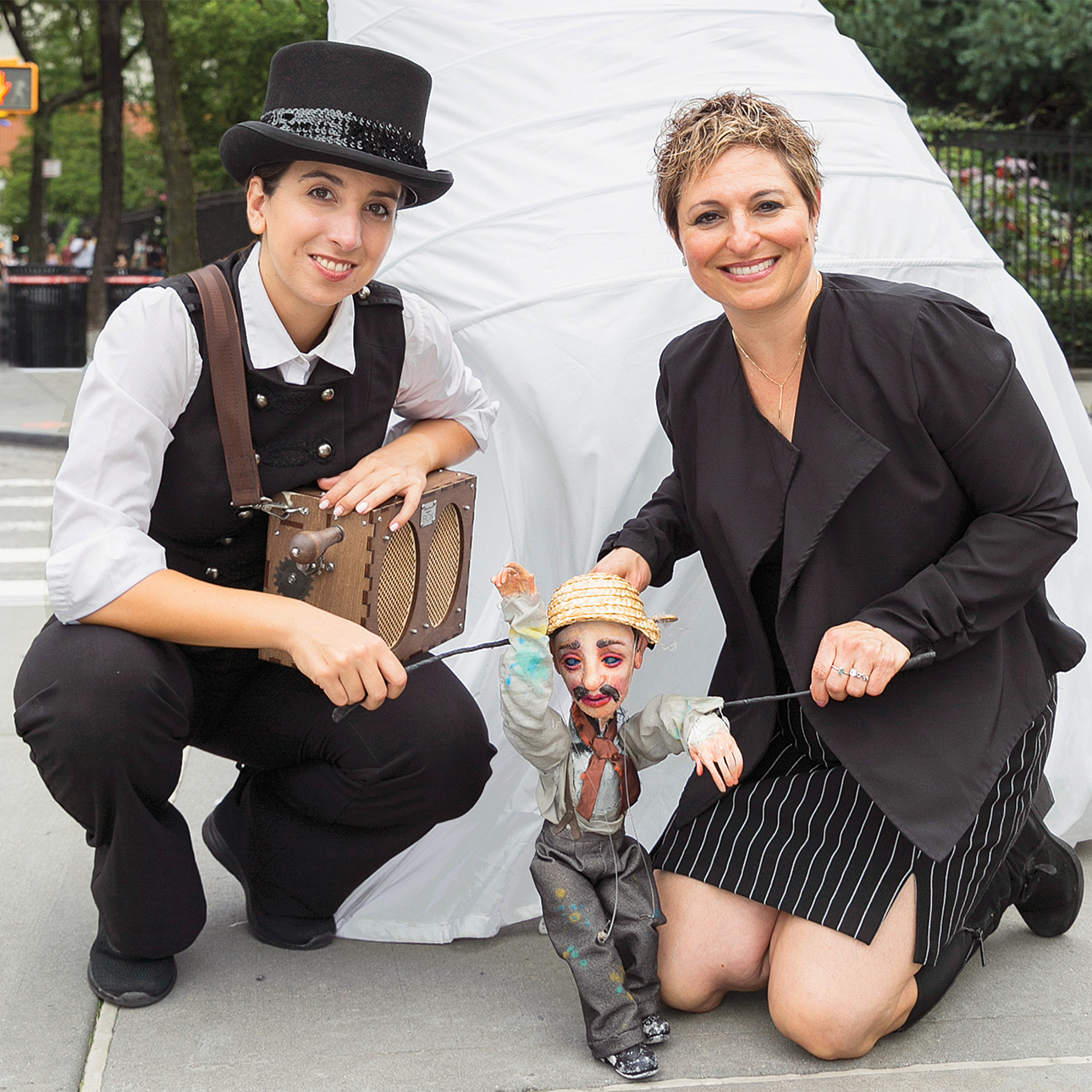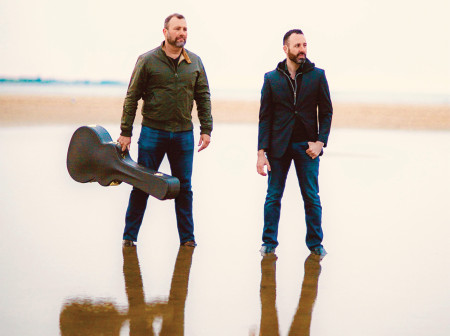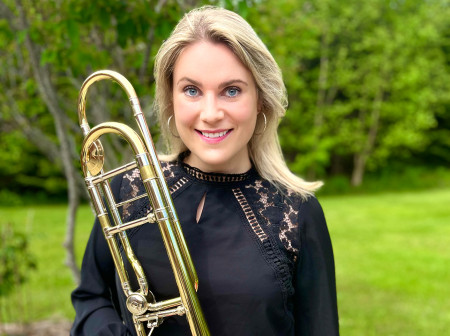As executive artistic director of Bated Breath Theatre Company, Mara Lieberman ’98 MA creates site-specific, interactive performances for theaters and non-traditional spaces. In 2021 Lieberman directed Voyeur: The Windows of Toulouse-Lautrec, a critically acclaimed immersive performance in New York City that became the longest-running pandemic-friendly show in the city. That same year, TimeOut named Lieberman a “Future Maker” in its article “50 Amazing People Changing the World.”
Northwestern Magazine’s Diana Babineau spoke with the award-winning writer and director about the challenges, surprises and excitement of directing Voyeur. Lieberman also offers a sneak preview of her next immersive performance, coming to New York City in March.
What was Voyeur: The Windows of Toulouse-Lautrec?
Voyeur was my answer to the notion that live theater could not be done during the pandemic. We had a show running in spring 2020 called Unmaking Toulouse-Lautrec, which was performed in a bar. It was a very down-and-dirty biography of the post-impressionist French painter Henri de Toulouse-Lautrec. When the pandemic hit, we had to close. And I just felt really driven to find an alternative way to do performance safely.
This idea came to me that perhaps theater could be done safely if the actors were behind windows, with scenes that popped up in public, outdoor spaces, and a small group of masked audience members traveled through the streets of the West Village together. I thought that this idea of looking out of windows was really pertinent to our time — when people were in lockdown and were spending a lot of time looking out of windows or looking into other people’s windows, imagining their lives or their stories.
So the show itself is basically like a dream, a memory scape — as if someone asked Toulouse-Lautrec, “If you could pack up six memories in a suitcase and take them with you when you die, what six memories would you take?” Voyeur is how I imagine he would answer. We brought 1899 Paris to New York in 2021. Toulouse-Lautrec’s work is so erotic and charged, and I thought that during such a dark time, we could use a little charge, a little remembrance of a golden time.
We opened Sept. 30, 2020, and did about 350 performances through July 31, 2021. I never thought it would go that long!
What was it like to create a show outdoors during a pandemic?
As a director and a theater-maker, I’m hyper-obsessed with every detail, every bit of choreography, every breath. It’s all like a symphony of sound and motion and words. But when we moved the performance outdoors, New York City became our scene partner. To have this highly stylized choreographed sensibility thrown up against this totally wild, chaotic and full-of-life city — it was fascinating. The architecture of the city became like a playground for us.
I remember directing a scene from the sidewalk while the actors were three stories up and behind windows, and I’m on my cell phone with the stage manager, telling them to “have her move her leg a little bit over to the right” — it was definitely a challenge. And everyone was masked, so trying to devise a show without seeing each other’s faces — it was all challenging beyond anything that I could have imagined.
But being able to bring art to the street in a totally new way can end up changing the lives of people that live in the area or walk through the area — and that is so exciting to me and not something I anticipated.
So the audience members move around the city, encountering different scenes of the play — was that difficult to manage?
Yes – as the director, it wasn’t like I could just move on to another project. I had to be there almost every single performance because you’re on the ground triaging real things. Depending on what is happening around us in the city, we might have to move the scene somewhere else and tell the tour guides to come down a different block. Slack was our friend! I was in constant communication with the stage managers.

Voyeur provided a window into Toulouse-Lautrec's mind.
What drew you to Toulouse-Lautrec as a focus for this work?
The work I make is not naturalistic — it’s physical theater. It’s stylized. There’s a lot of dance and expressionistic movement. And if you look at Toulouse-Lautrec’s figures in his paintings and the lines of their bodies, they have this kind of theatrical but almost grotesque quality to them. They’re extremely vivid and have a lot of movement and shape.
Toulouse-Lautrec loved the outcasts of Paris: working-class people and artists, bohemians and queer people. He really wanted to embrace them and bring beauty and light and integrity to them. As a theater-maker, I love the untold stories.
He was also the grandfather of advertising and billboards — Andy Warhol, Picasso, Lichtenstein — all of these people were influenced by Toulouse-Lautrec. He was one of the first people to make posters. He would make these posters for stuff at the Moulin Rouge, which would get pasted up around Paris and people would pull them down before the paste was dry and steal them. They were obsessed with his work. He brought together fine art and advertising, really for the first time.
What do you find most exciting about immersive theater?
I believe theater has unparalleled power to make us feel our lives as we’re living it. Sometimes the traditional audience configuration, where the audience is sitting in the dark, disassociated somewhat from the play, can deaden the experience. I try to make my work an invitation for the audience to co-create the experience.
Northwestern taught me that theater can happen anywhere, anytime, and that we really need to loosen the boundaries of what performance is. We can invigorate traditional forms of theater by inviting the audience into a totally different relationship with the work. I like to say that I make boring things sexy. I love when audiences say, “You know, I’ve walked down 8th Street a million times, but I’ve never seen it like this.” The power of the performance is in its unexpected surprises, in being able to make beauty anywhere.
Northwestern’s performance studies program straddled the theoretical and the practical — and that’s why I chose Northwestern above other programs: Because I’m a maker. I wanted to learn the academic stuff, but I also wanted to know how to put it into practice. My education at Northwestern was so impactful and I keep returning to it over and over.
What’s on the horizon for you?
I have a couple of performances and new plays I’ve working on for a while that are interactive, participatory, immersive. But now I’m obsessed with this kind of walking-tour model of theater. It’s so exciting to look at the city as a narrative asset. I have another immersive performance in the works about Andy Warhol called Chasing Andy Warhol. I’m in a really intensive devising phase right now. We intend to open in March.
Chasing Andy Warhol will open in the East Village in New York City in March 2022.
Diana Babineau is a writer and editor in the Office of Global Marketing and Communications.




Reader Responses
No one has commented on this page yet.
Submit a Response